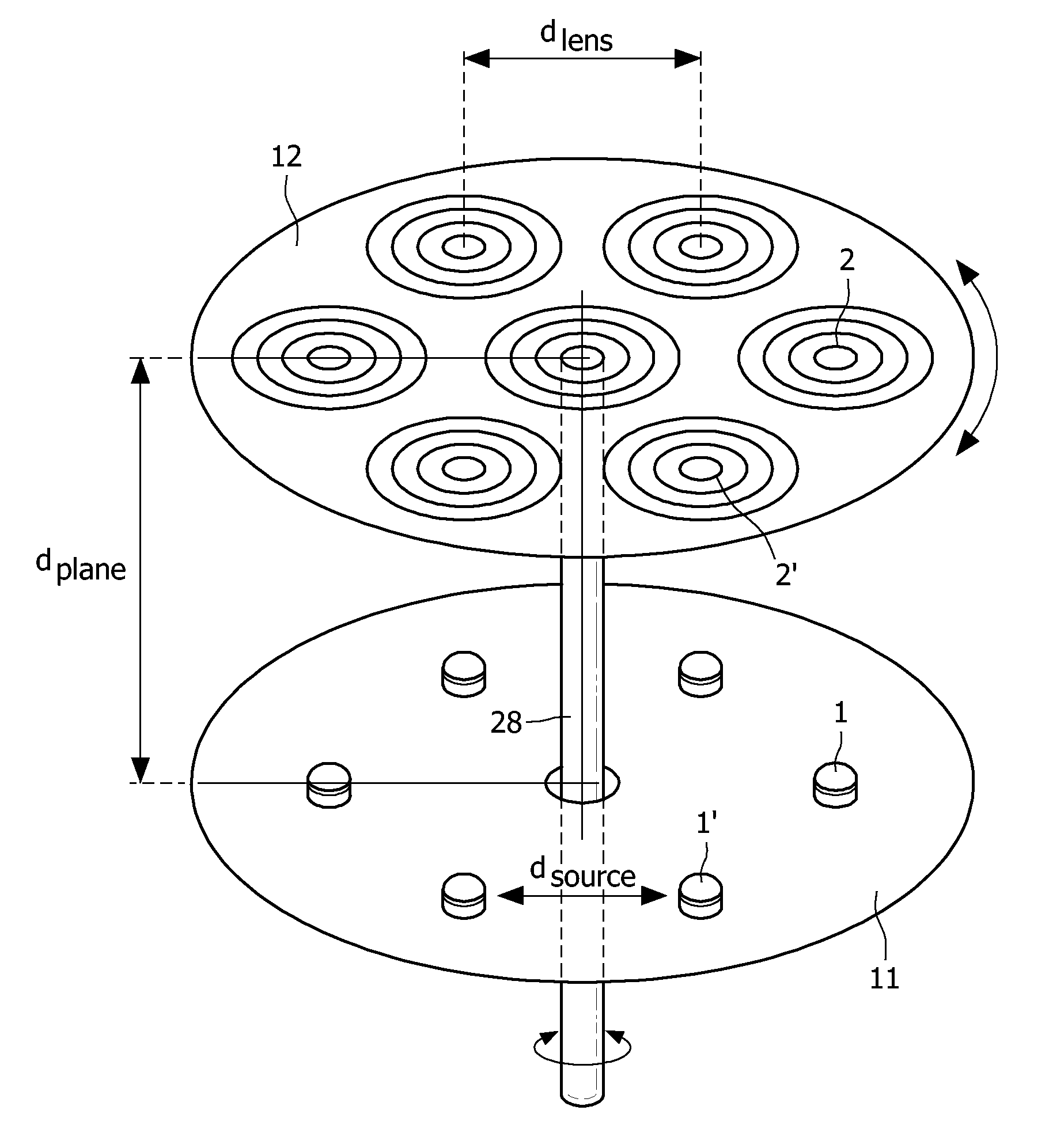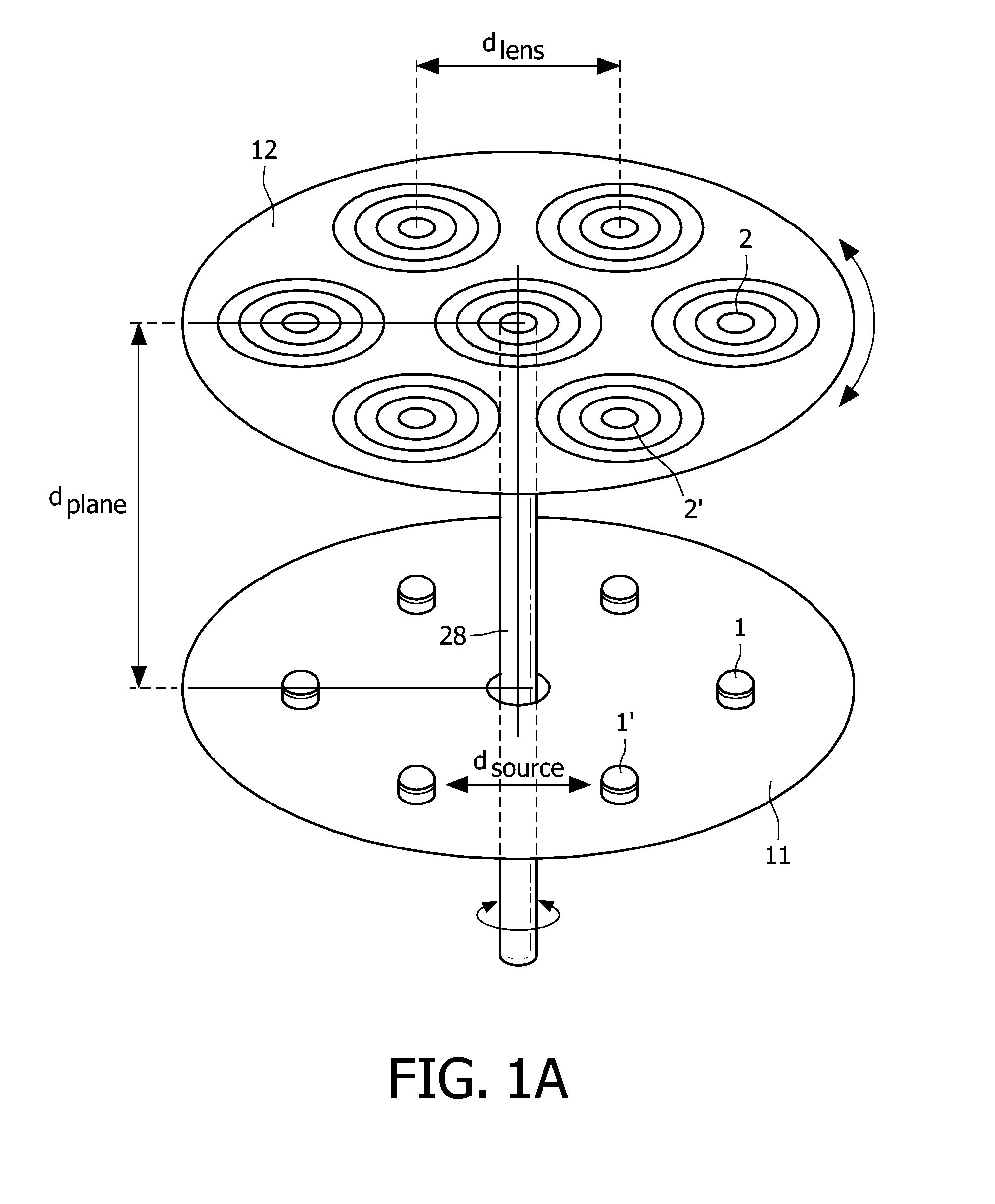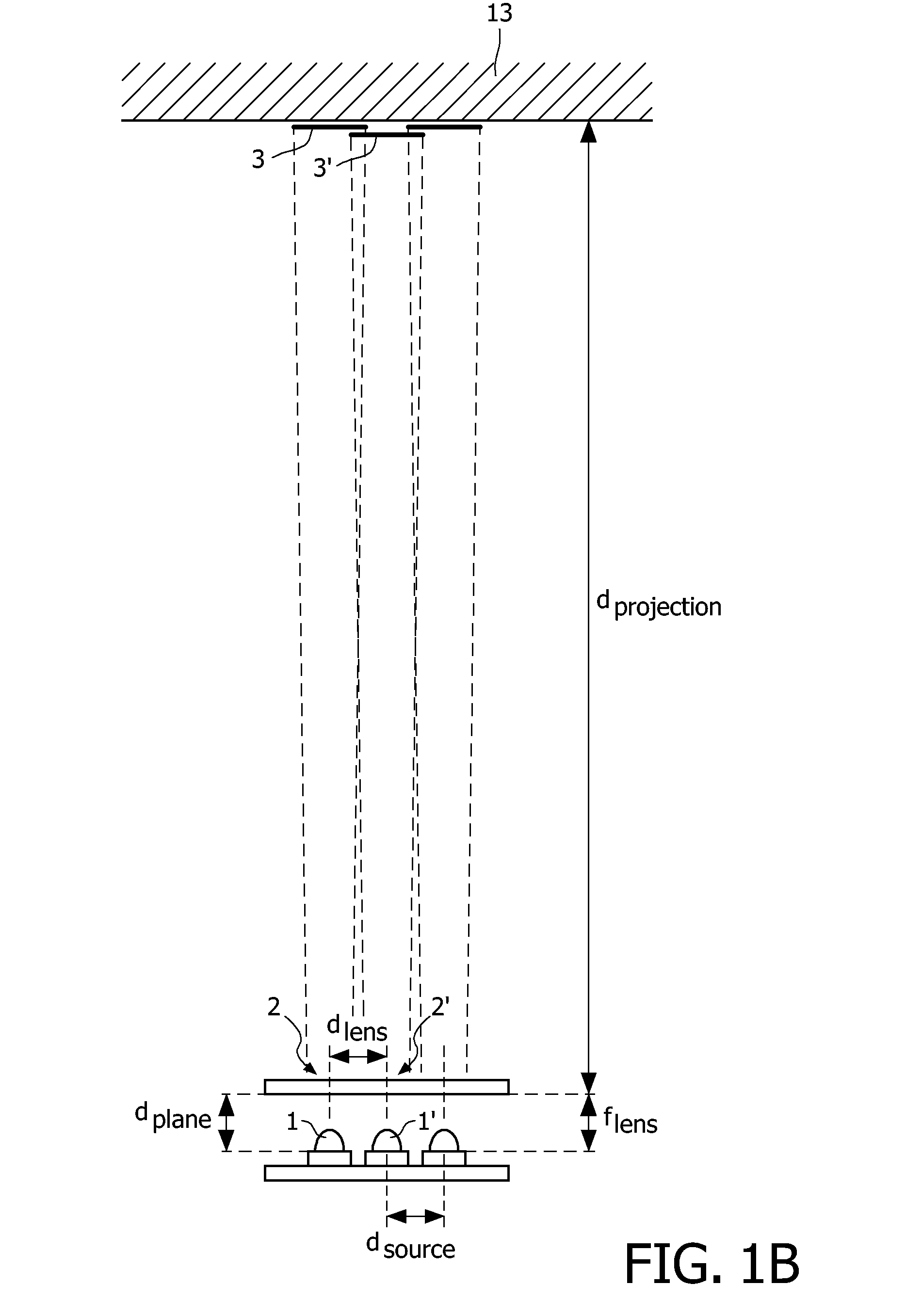Illumination system
a technology of illumination system and sconce, which is applied in the field of illumination system, can solve the problems of relatively complicated construction of illumination system, and achieve the effect of lowering the cost of illumination system
- Summary
- Abstract
- Description
- Claims
- Application Information
AI Technical Summary
Benefits of technology
Problems solved by technology
Method used
Image
Examples
Embodiment Construction
[0041]FIG. 1A is a perspective view of an embodiment of the illumination system according to the invention. In addition, FIG. 1B is a side view of the embodiment of the illumination system as shown in FIG. 1A. The illumination system comprises an array of light sources 1, 1′, . . . arranged in a pre-determined manner in a first plane 11. In the example of FIG. 1A, the light sources 1, 1′, . . . are arranged in a hexagonal structure. The distance between the light sources 1, 1′, . . . is indicated as dsource, dsource representing a characteristic dimension of the spatial arrangement of the light sources 1, 1′, . . . in the first plane 11. In the example of FIG. 1A, the light sources are light-emitting diodes (LEDs). LEDs may be light sources of distinct primary colors such as, for example, the well-known red, green, blue and amber LEDs. Alternatively, the light emitter may have, for example, cyan as a primary color. The primary colors may be either generated directly by the LED chip,...
PUM
 Login to View More
Login to View More Abstract
Description
Claims
Application Information
 Login to View More
Login to View More - R&D
- Intellectual Property
- Life Sciences
- Materials
- Tech Scout
- Unparalleled Data Quality
- Higher Quality Content
- 60% Fewer Hallucinations
Browse by: Latest US Patents, China's latest patents, Technical Efficacy Thesaurus, Application Domain, Technology Topic, Popular Technical Reports.
© 2025 PatSnap. All rights reserved.Legal|Privacy policy|Modern Slavery Act Transparency Statement|Sitemap|About US| Contact US: help@patsnap.com



